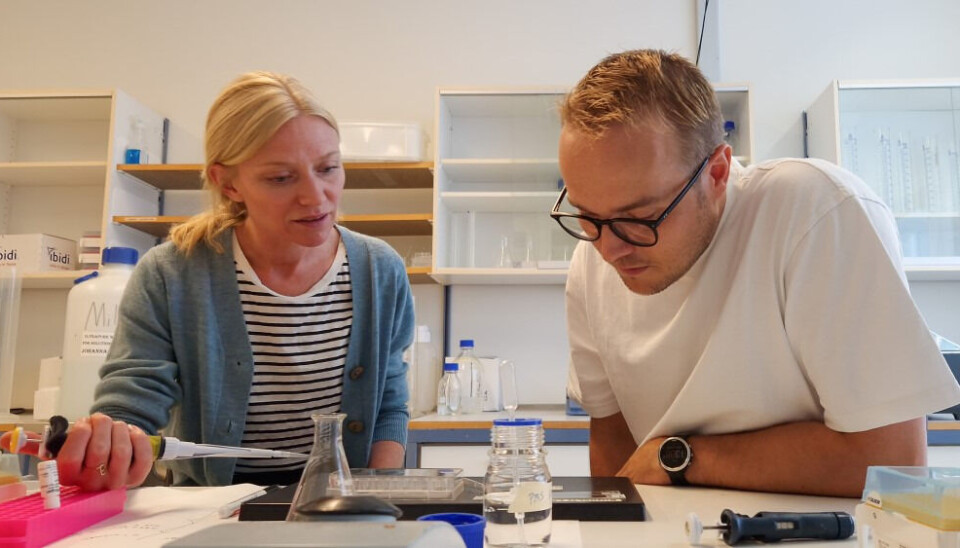THIS ARTICLE/PRESS RELEASE IS PAID FOR AND PRESENTED BY University of Oslo - read more

Mouse study: Researchers discovered a gene that can reduce brain damage in newborns
The gene helps to repair brain damage caused by a lack of oxygen during birth, Norwegian researchers found.
The most common cause of death or disabilities in newborn babies is what is called hypoxic-ischemic brain injury. This arises when the supply of blood and oxygen to the brain is blocked for a period of time.
"The lack of blood and nutrients causes brain cells to die. These babies can then suffer from neurological disorders such as cerebral palsy," researcher and associate professor Johanne Egge Rinholm says.
Rinholm and her team at the Institute of Basic Medical Sciences at the University of Oslo and Oslo University Hospital have made a promising discovery regarding the future treatment of these babies.
In a newly published study, they describe their experiments with a receptor called HCAR1 on mice. A receptor is a protein that triggers a response inside a cell. Their findings indicate that the HCAR1 receptor helps to repair brain damage.
Mice lacking the HCAR1 gene formed few new cells following brain damage

The researchers used a group of newborn mice whose HCAR1 gene had been removed, and another control group of 'normal' mice.
"Whereas brain tissue in the 'normal' mice was partly restored during the 42 days following the brain damage, the brains of mice lacking HCAR1 showed little sign of repair. In addition, we found that the mice in the control group produced new cells that could help to repopulate the injured areas of their brain. In contrast, the mice without HCAR1 showed little regeneration of cells," research fellow Emilie Rylund Glesaaen explains.
Scientists must find out whether they can achieve a similar effect in humans
According to Rinholm, their data suggest that HCAR1 is an important factor in the repair of brain tissue following hypoxic-ischemic injury in newborn mice.
The treatment currently used in humans is to cool the babies down.
"Nevertheless, many of these babies continue to suffer from long-term brain damage. So new drugs are needed that can protect the brain and help to generate new brain cells," says Rinholm.
She emphasises that further studies are necessary in order to find out whether HCAR1 has a similar, beneficial effect in humans.
Lactic acid provides cells with energy and works with the HCAR1 gene
The scientists were keen to study the receptor because of its connection with lactic acid. Lactic acid, or its less acidic form lactate, is produced by your muscles when you do strenuous exercise. But lactate is also produced in the brain.
"Experiments on mice indicate that injections of extra lactate can improve rehabilitation after a brain injury. But the reason for this has been unclear up until now. In much the same way as sugar, lactate can provide cells with metabolic energy. But recent research shows that lactate can also function as a signalling molecule which helps to transmit information from the surroundings to cells or between cells. This occurs when lactate binds to the HCAR1 receptor we have been researching. However, the positive role played by HCAR1 in the brain was not well understood," says Rinholm.
Reference:
Kennedy et al. Lactate receptor HCAR1 regulates neurogenesis and microglia activation after neonatal hypoxia-ischemia, eLife, vol. 11, 2022. DOI: 10.7554/eLife.76451

This article/press release is paid for and presented by the University of Oslo
This content is created by the University of Oslo's communication staff, who use this platform to communicate science and share results from research with the public. The University of Oslo is one of more than 80 owners of ScienceNorway.no. Read more here.
See more content from the University of Oslo:
-
Queer opera singers: “I was too feminine, too ‘gay.’ I heard that on opera stages in both Asia and Europe”
-
Putin’s dream of the perfect family
-
How international standards are transforming the world
-
A researcher has listened to 480 versions of Hitler's favourite music. This is what he found
-
Researcher: "AI weakens our judgement"
-
New, worrying trend among incels, according to researcher





































